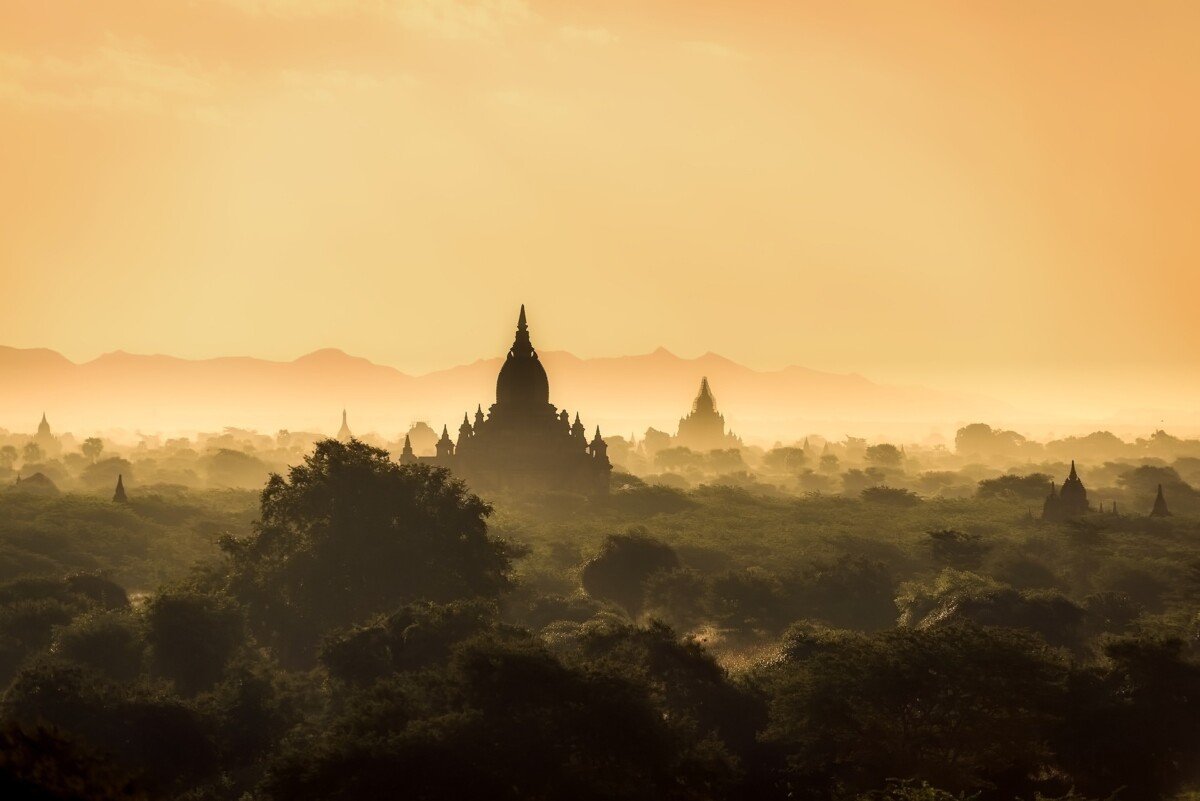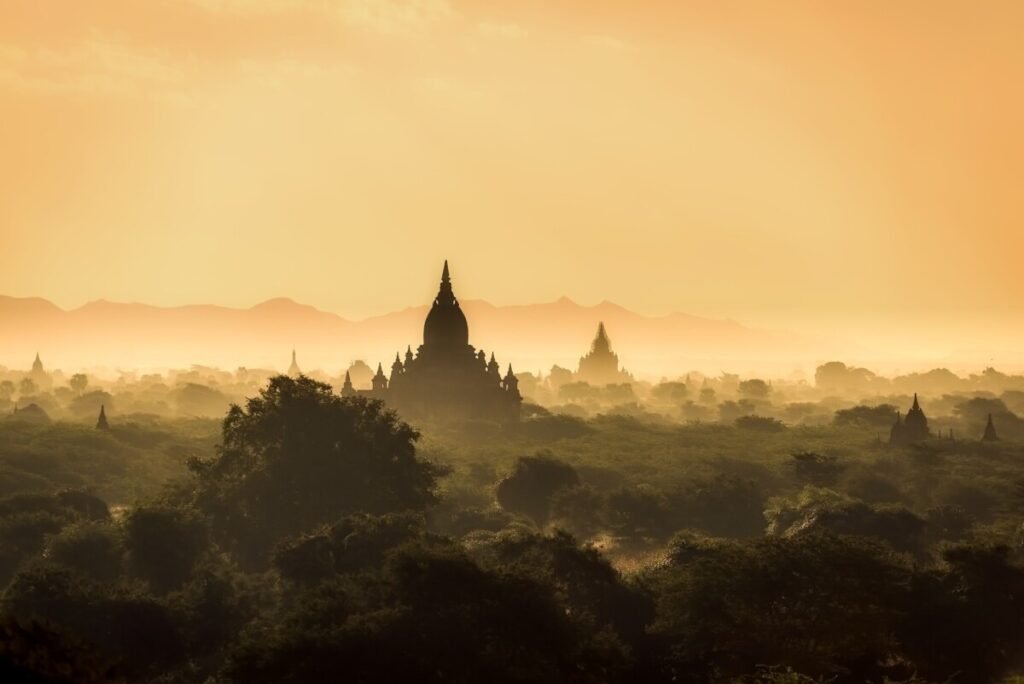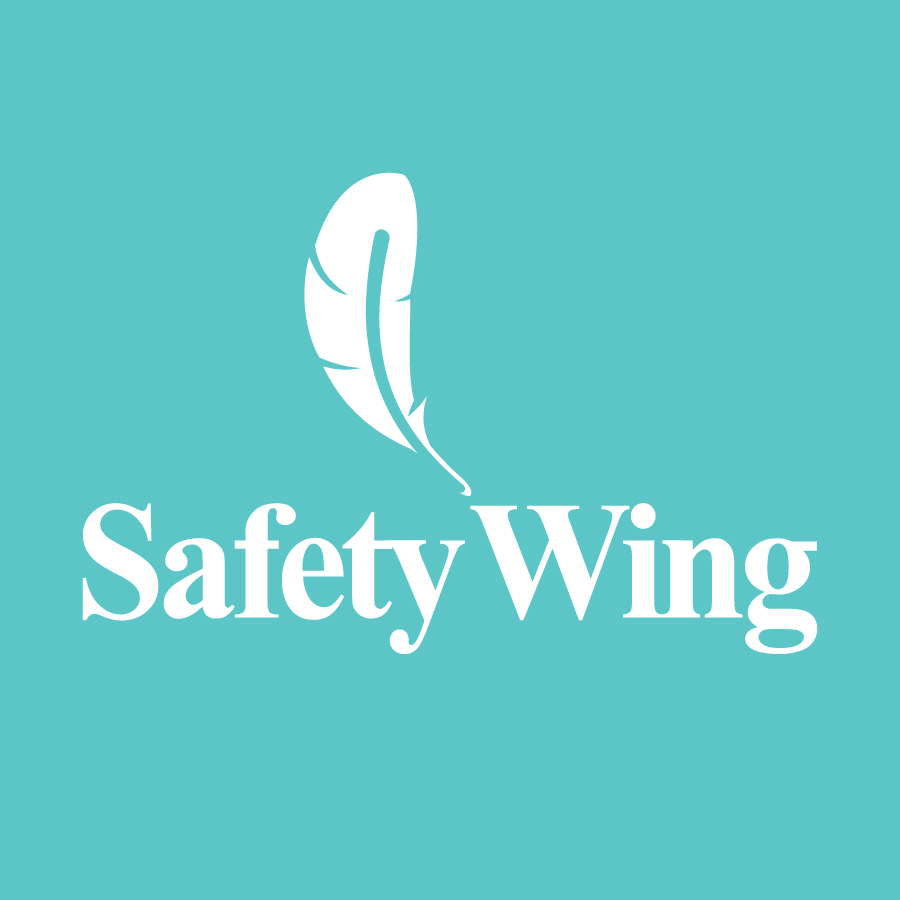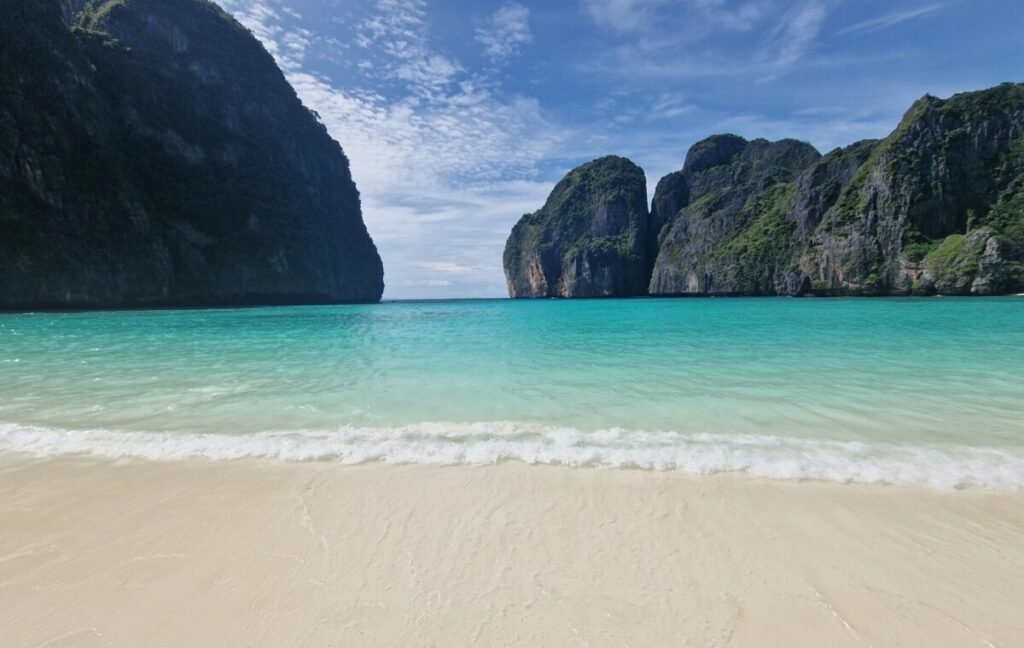
Safe to Travel – Myanmar (Burma)
Is Myanmar (Burma) Safe to Travel to in 2025
You might be thinking Is Myanmar safe to travel? When contemplating Myanmar (Burma) safety, it’s essential to be thoroughly informed before making any travel decisions. The country’s enchanting landscapes and rich cultural heritage are shadowed by ongoing concerns regarding its political climate and safety issues for tourists.
Moreover, solo travel in Myanmar (Burma) poses its own set of challenges, highlighting the importance of being well-prepared with emergency numbers in Myanmar (Burma) and ensuring you have adequate travel insurance for Myanmar (Burma).
My name is Shannon 🙂
I have been travelling full time for the last decade. I have seen and experienced the most wonderful and mysterious things and incredibly excited to share these adventures with you. I thank my lucky stars that i have found myself in a position that I can give you all the tips and tricks needed for a seamless trip. So pack your bags and lets go!
Affiliate Disclosure: Some of the links on our site are affiliate links, meaning, at no additional cost to you, we may earn a commission if you click through and make a purchase. This helps us to continue providing valuable content and supports our efforts in bringing the travel community together. We only recommend products and services we believe in and think you’ll find useful. Complete details are included in our affiliate disclaimer. Thank you for your support!
In a Hurry? Here's our Key Info for This Article
- Check travel advisories before planning your trip
- Respect local customs and traditions
- Be aware of restricted areas
- Health precautions are necessary
- Stay informed about the political situation
- Consider travel insurance
Stay Connected
Things to Do
Essential Apps
Surfshark VPN
Stay safe online and continue accessing all your services just like back home.
Budget Tips
Understanding Myanmar’s (Burma) Political Climate and Travel Advisories
When considering Myanmar (Burma) safety for your upcoming travels, it’s crucial to take into account the current political climate, which can significantly affect both Myanmar (Burma) tourist safety and the overall experience. As of late, the situation remains tense, with ongoing conflicts that have led to instability in various regions. This unrest has prompted several countries to issue Myanmar (Burma) travel advisory notices, urging potential visitors to reconsider their plans or to remain extremely vigilant if travel is essential.
The Myanmar (Burma) crime rate, though not exceedingly high in tourist-frequented areas, can be misleading. Instances of petty theft do occur, and the political unrest has led to unpredictable situations where travelers might find themselves inadvertently caught in between. Solo travel in Myanmar (Burma) is particularly challenging under these conditions, and it’s advised to stay informed through reliable sources.
Emergency numbers in Myanmar (Burma) are essential for every traveler’s contact list, alongside ensuring comprehensive travel insurance for Myanmar (Burma) that covers political unrest. Health and safety in Myanmar (Burma) also demand attention, with recommended vaccinations and precautions against mosquito-borne diseases.
While Myanmar’s rich culture and breathtaking landscapes are undeniably alluring, understanding and respecting cultural norms in Myanmar (Burma) is paramount, especially in these turbulent times.
Myanmar (Burma)’s Reputation: Fact vs Fiction
| ✅ Fact | ❌ Fiction |
|---|---|
| Concerns about Myanmar (Burma) safety are valid due to ongoing political unrest. | Myanmar is completely unsafe for tourists at all times. |
| The Myanmar (Burma) crime rate can be higher in certain areas, especially at night. | Crime affects every corner of Myanmar, making it dangerous to visit anywhere. |
| Travel insurance for Myanmar (Burma) is strongly recommended due to potential health and safety risks. | You don’t need travel insurance when visiting Myanmar as it’s perfectly safe. |
| Emergency numbers in Myanmar (Burma) are crucial for travelers to have on hand. | Local authorities in Myanmar are not responsive to tourists in emergency situations. |
Emergency Contacts: Numbers and Addresses
When you find yourself in a precarious situation in Myanmar (Burma), knowing the right numbers to call can be a lifeline. Given the fluctuating political climate in Myanmar (Burma) and concerns about Myanmar (Burma) tourist safety, it’s crucial to have these emergency contacts at your fingertips. Solo travel in Myanmar (Burma) especially demands a heightened awareness of safety protocols. Here are the essential emergency numbers and addresses:
- Police: 199 – For reporting crimes and seeking immediate police assistance. Myanmar (Burma) crime rate varies by region, so prompt reporting can aid in efficient response.
- Fire Brigade: 191 – In case of fire, knowing this number can save lives and property.
- Medical Emergency: 192 – Access to immediate medical care is critical, especially considering the health and safety in Myanmar (Burma) standards.
- Myanmar Tourist Police: (+95) 067-3404668 – Specifically designed to assist tourists, they address issues ranging from minor inconveniences to serious legal matters.
In light of these precautions, it’s advisable to secure travel insurance for Myanmar (Burma) before your journey. Moreover, acquainting yourself with cultural norms in Myanmar (Burma) can prevent unintentional offenses that may lead to uncomfortable situations. For a broader perspective on travel safety, consider reading about the South Korean safety guidelines, as comparing different destinations can provide valuable insights into what to expect and how to prepare for your travels.
Common Safety Concerns About Myanmar (Burma)
Traveling to Myanmar (Burma) in the current year presents a unique set of challenges and concerns for the intrepid traveler. While the allure of its untouched landscapes and the promise of exploring less frequented paths may tempt you, it’s crucial to weigh these against the prevailing safety issues. The political climate in Myanmar has been unstable, marked by civil unrest and conflicts that have escalated in recent years. This instability has led to a situation where travelers could find themselves inadvertently caught in between local conflicts or government-imposed curfews, especially in certain regions.
Moreover, petty crimes such as pick-pocketing and scams are not uncommon in tourist hotspots. It’s advisable to remain vigilant, especially in crowded areas, and to secure your belongings at all times. Health concerns also pose a significant risk, with diseases such as malaria and dengue fever being prevalent. Taking preventive measures, including vaccinations and anti-malarial medication, is a must before embarking on your journey. Making sure you are covered by insurance is vitally important in Myanmar due to the heightened health and safety risks. Safetywing can offer some good coverage for those in need of affordable coverage.
For those considering travel to other regions with similar concerns, it might be beneficial to review the Brazil safety guide for a comparative perspective on safety measures and travel advisories.
In essence, while Myanmar offers a rich tapestry of cultural and natural wonders, the safety of travelers cannot be guaranteed in the current climate. It’s essential to stay updated on travel advisories, exercise caution, and prioritize your safety above the allure of adventure.
Crime Rates
Traveling to Myanmar in 2025 requires a cautious approach, especially when considering the crime rates that have seen an uptick in certain areas. Unlike the serene landscapes and historical sites that might lure you in, the undercurrents of petty theft, scams, and, in more remote regions, serious crimes, paint a darker picture.
| Crime Type | Incidence Rate | Advisory Level |
|---|---|---|
| Petty Theft | High | Caution Advised |
| Scams | Moderate | Moderate Caution |
| Violent Crime | Low to Moderate | High Caution |
| Political Unrest | Variable | Stay Informed |
It’s imperative to stay vigilant, keep your belongings secure, and remain aware of your surroundings. Always follow local advisories and opt for guided tours in regions where safety might be compromised.
Cultural Norms
When you decide to visit Myanmar (Burma), understanding the cultural norms is crucial for your safety and well-being. This country, with its complex history and diverse ethnic landscape, follows traditions and customs that might be unfamiliar to Western travelers. Disrespecting these norms can not only offend locals but also land you in precarious situations.
Respecting Local Dress Codes
In Myanmar (Burma), modesty in dress is not just preferred; it’s expected. Tourists, especially, are advised to cover their shoulders and knees when visiting sacred sites like pagodas and temples. Ignoring this dress code can result in being denied entry or, worse, causing a public outrage. This adherence to traditional attire is a reflection of the country’s conservative values, and failure to comply can be seen as a direct disrespect to their culture.
Remember, Myanmar (Burma) safety isn’t just about protecting yourself from physical harm; it’s also about safeguarding your interactions with the local population. The Myanmar (Burma) travel advisory often includes tips on cultural etiquette, emphasizing the importance of dressing appropriately. Moreover, the Myanmar (Burma) crime rate, though not alarmingly high, includes incidents of verbal harassment or more severe consequences for cultural insensitivity. This is particularly important for solo travel in Myanmar (Burma), where individual actions are more noticeable and can lead to uncomfortable situations. For a similar local dress code, look at Patricia’s first hand experience of travelling the UAE as a solo female traveller.
Additionally, it’s vital to understand the political climate in Myanmar (Burma), which can be volatile. Discussions on politics, especially criticism of the government or military, should be avoided. Such conversations can not only put you in danger but also those around you. The emergency numbers in Myanmar (Burma) are essential to have on hand, but avoiding situations where you might need to use them is preferable.
Lastly, securing travel insurance for Myanmar (Burma) that covers health and safety in Myanmar (Burma) is a smart move. Not only does it provide a safety net for medical emergencies, but it also ensures you’re covered in the event of theft or loss of personal belongings due to misunderstanding or misinterpreting local customs and norms.


Is Myanmar (Burma) Safe for Female Travelers?
When considering Myanmar (Burma) safety, particularly for female travelers, it’s critical to approach with a heightened sense of caution. The country’s complex political climate and ongoing civil unrest have contributed to an atmosphere that can be unpredictable and, at times, unsafe. While Myanmar offers a rich tapestry of cultural experiences and historical sites, the current situation demands careful consideration.
Understanding the Political Climate
The political climate in Myanmar (Burma) has been volatile, with frequent clashes and an unstable situation that can escalate without warning. This unpredictability poses a significant risk, especially for solo travellers. Female travellers, in particular, should stay informed about the latest Myanmar (Burma) travel advisory updates to avoid areas of conflict. Awareness of the local political situation and avoiding demonstrations or large gatherings is crucial for safety. These events can turn violent, with security forces often using force against protesters. Tourists may find themselves caught in the crossfire or subjected to arbitrary arrests.
Cultural norms in Myanmar (Burma) are deeply ingrained, and respecting these traditions is essential for any visitor. However, female travelers should be particularly mindful of their attire and behavior to avoid unwanted attention. Despite the warm hospitality of the Burmese people, instances of harassment can occur, underscoring the importance of staying vigilant and adopting conservative dress codes in public spaces. Additionally, the Myanmar (Burma) crime rate, though not exceedingly high, includes petty crimes like theft, which could disproportionately affect tourists unfamiliar with the area.
Emergency Preparedness and Health Safety
Having access to emergency numbers in Myanmar (Burma) and securing comprehensive travel insurance for Myanmar (Burma) are non-negotiable for female travelers. The healthcare system in Myanmar is not as developed as in Western countries, making it imperative to be prepared for any health and safety in Myanmar (Burma) concerns that may arise. From vaccinations to avoiding street food that may lead to health issues, taking precautionary steps is vital. Additionally, understanding the local emergency services and having a plan in place for health or safety emergencies can make a significant difference in response times and the quality of care received.
In conclusion, while Myanmar offers an array of historical and cultural experiences, the current safety concerns, particularly for female travellers, cannot be overlooked. Staying informed, prepared, and cautious can help navigate the complexities of travelling in Myanmar during these turbulent times.
Myanmar (Burma) Concluding Thoughts
Considering the current Myanmar (Burma) safety concerns, it’s crucial for travelers to stay informed and cautious. The Myanmar (Burma) travel advisory and the Myanmar (Burma) crime rate are not to be taken lightly. For those considering solo travel in Myanmar (Burma), it’s essential to understand the risks involved. Health and safety in Myanmar (Burma) should be a priority, and having travel insurance for Myanmar (Burma) is more of a necessity than an option.
Furthermore, being aware of the emergency numbers in Myanmar (Burma) can provide a semblance of security in unexpected situations. The political climate in Myanmar (Burma) remains tense, and understanding cultural norms in Myanmar (Burma) can help avoid unintentional disrespect. Tourist safety is not guaranteed, and visitors should weigh the risks carefully before planning a trip. In these challenging times, the allure of exploration must be balanced with personal safety considerations.
Is Myanmar (Burma) Safe to Travel to in 2025 FAQ
Myanmar (Burma) has been facing internal conflicts and political instability, leading to safety concerns for travelers. Areas of conflict are particularly risky and should be avoided. It’s crucial to stay updated through reliable news sources and avoid areas with recent unrest. Additionally, internet and communication disruptions can hinder travel planning and emergency communication.
The political turmoil can lead to sudden changes in safety conditions, including protests and military actions. Tourists might find themselves unexpectedly in the midst of dangerous situations or under curfews, significantly impacting travel plans.Travel restrictions and security checkpoints can limit tourists’ access to certain areas, impacting their travel plans and experiences.
Solo travellers face heightened risks, especially in less touristy areas. It’s advised to join guided tours and stay in well-known tourist locations. Always inform someone of your travel plans and check in regularly. Make sure you keep up to date with local news, travel advisories to avoid conflict areas.













